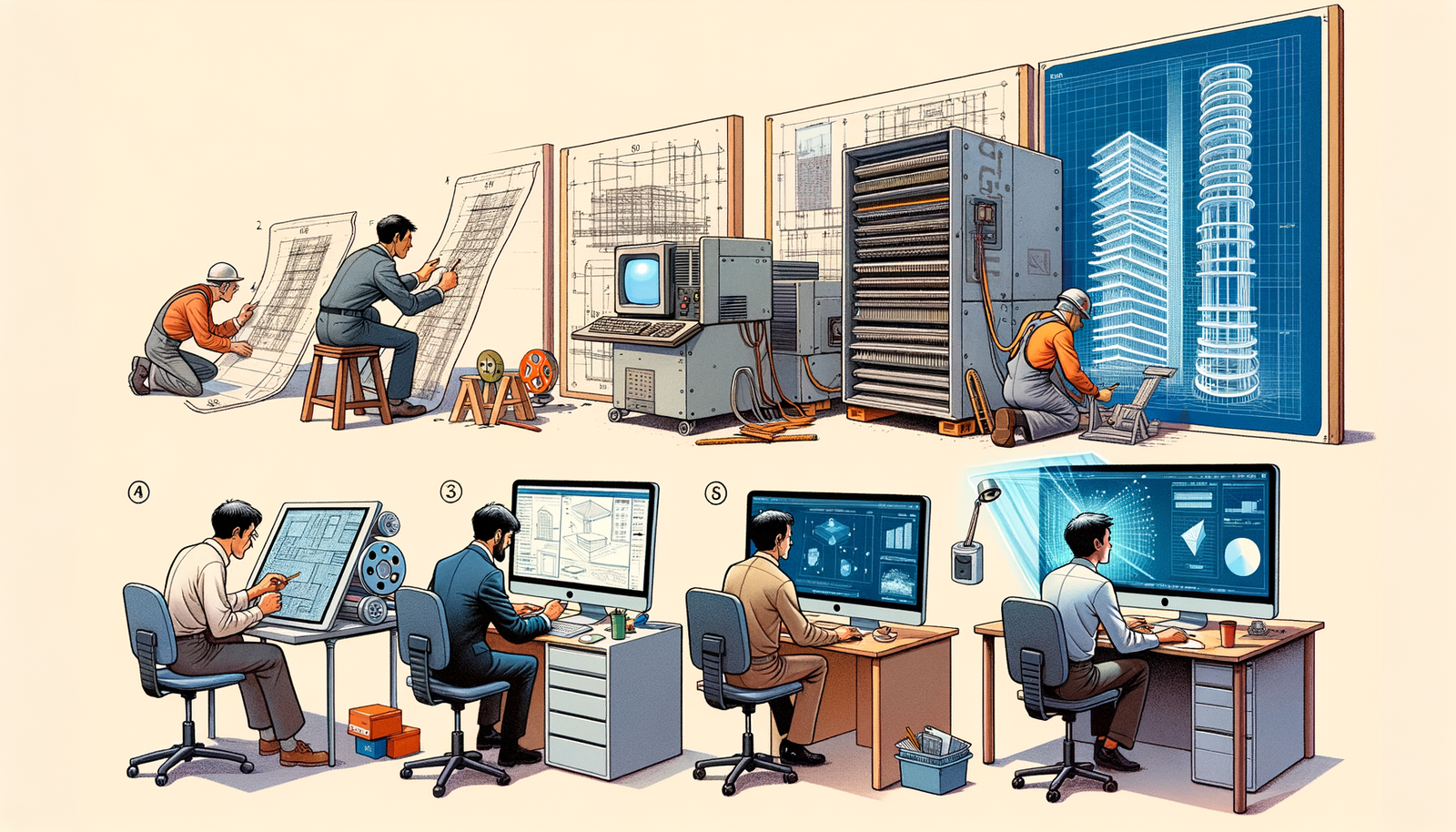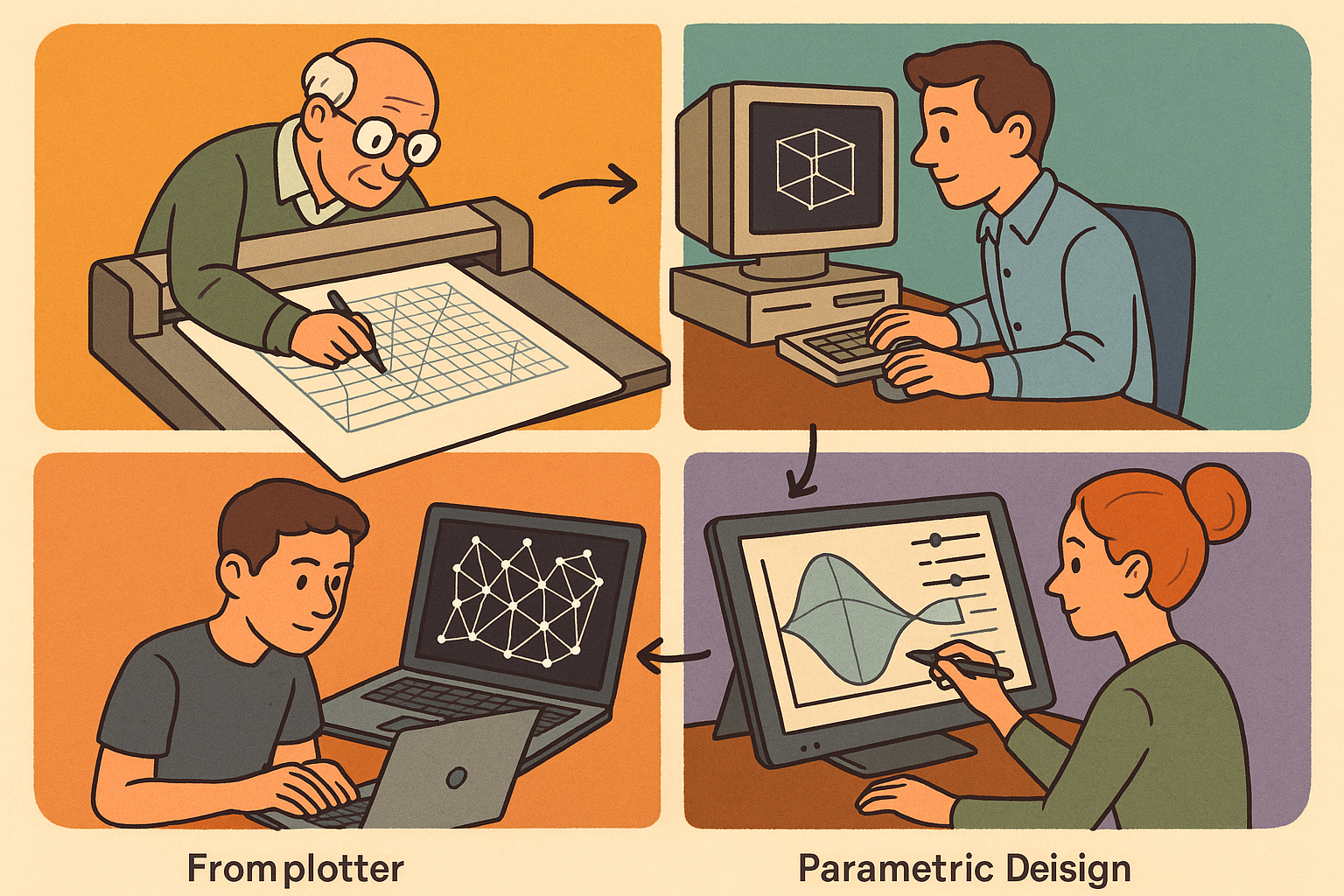Your Cart is Empty
Customer Testimonials
-
"Great customer service. The folks at Novedge were super helpful in navigating a somewhat complicated order including software upgrades and serial numbers in various stages of inactivity. They were friendly and helpful throughout the process.."
Ruben Ruckmark
"Quick & very helpful. We have been using Novedge for years and are very happy with their quick service when we need to make a purchase and excellent support resolving any issues."
Will Woodson
"Scott is the best. He reminds me about subscriptions dates, guides me in the correct direction for updates. He always responds promptly to me. He is literally the reason I continue to work with Novedge and will do so in the future."
Edward Mchugh
"Calvin Lok is “the man”. After my purchase of Sketchup 2021, he called me and provided step-by-step instructions to ease me through difficulties I was having with the setup of my new software."
Mike Borzage
Design Software History: Evolution of Structural Analysis Software: From Manual Calculations to AI-Driven Tools
July 12, 2024 3 min read


Introduction to Structural Analysis Software
Structural analysis software refers to applications used by engineers to simulate, analyze, and design structures such as buildings, bridges, and other infrastructures. This software plays a crucial role in the fields of engineering, construction, and design by providing tools that help ensure the safety, reliability, and efficiency of structural designs.
Historically, structural analysis was performed manually, relying on engineering principles and physical prototypes to predict the behavior of structures under various loads. These methods were time-consuming and prone to human error, presenting significant challenges in terms of accuracy and efficiency.
Early Development and Pioneering Efforts
Initial Computational Methods
The advent of computational methods, particularly Finite Element Analysis (FEA), marked a significant breakthrough in structural analysis. FEA allowed engineers to discretize complex structures into smaller, manageable elements, enabling more precise calculations of stress, strain, and other critical parameters.
Key academic contributions to FEA came from figures like Ray W. Clough, who is often credited with coining the term "Finite Element Method" in 1960. Industrial contributions also played a pivotal role, with companies investing in the development of computational techniques to enhance structural analysis capabilities.
Early Software Packages
The 1960s and 1970s witnessed the emergence of the first structural analysis software packages. These early tools, although primitive by today's standards, laid the groundwork for future advancements. Notable early software included:
- STARDYNE: Developed by McDonnell Douglas, one of the first commercial FEA programs.
- ANSYS: Founded by John Swanson in 1970, a pioneering company in the field of engineering simulation.
These early software packages were instrumental in demonstrating the practical applications of computational methods in structural analysis and paved the way for future developments.
Evolution and Technological Advancements
Advancements in the 1980s and 1990s
The 1980s and 1990s brought significant improvements in computing power and graphical user interfaces (GUIs), making structural analysis software more accessible and user-friendly. These advancements allowed engineers to perform more complex analyses with greater efficiency.
User-friendly software packages emerged during this period, featuring intuitive interfaces and enhanced visualization capabilities. This era saw the introduction of software like SAP2000 by Computers and Structures, Inc., which became a staple in the industry.
Key Players and Their Contributions
Several major companies and individuals have left an indelible mark on the field of structural analysis software. Notable contributions include:
- ANSYS: Under the leadership of John Swanson, ANSYS developed powerful simulation tools that revolutionized engineering analysis.
- SAP2000: Developed by Computers and Structures, Inc., SAP2000 became highly regarded for its comprehensive capabilities in structural analysis and design.
Integration with Other Design Software
As the design industry evolved, the need for interoperability between structural analysis software and other design tools became evident. Integration with Computer-Aided Design (CAD) and Building Information Modeling (BIM) software became essential for seamless data exchange and collaborative workflows.
Standards like Industry Foundation Classes (IFC) facilitated data exchange, enabling better collaboration among architects, engineers, and construction professionals. This integration significantly enhanced the efficiency and accuracy of structural design processes.
Modern Trends and Future Directions
Current Capabilities and Innovations
Today, structural analysis software boasts an array of advanced features that cater to the demands of modern engineering projects. These include:
- Advanced simulation capabilities for complex structural systems.
- Enhanced visualization tools for better interpretation of analysis results.
- Support for diverse materials and construction techniques.
Modern software enables engineers to tackle challenging projects, such as high-rise buildings and long-span bridges, with greater confidence and precision.
AI and Machine Learning in Structural Analysis
Artificial Intelligence (AI) and Machine Learning (ML) are increasingly being integrated into structural analysis software. These technologies offer the potential to optimize and predict structural behavior more accurately, reducing the need for extensive manual calculations.
AI-driven tools can analyze vast amounts of data, identify patterns, and make predictions, enhancing the efficiency and reliability of structural analysis. These innovations are transforming the way engineers approach design and analysis tasks.
Future Perspectives
The future of structural analysis software is poised for exciting developments. Emerging technologies such as quantum computing and digital twins hold the promise of further revolutionizing the field.
Quantum computing could drastically speed up complex calculations, enabling more detailed and rapid analyses. Digital twins, which create virtual replicas of physical structures, offer new possibilities for monitoring and optimizing structural performance in real-time.
Conclusion
The journey of structural analysis software has been marked by remarkable advancements, transforming the engineering and design landscape. From the early days of manual calculations to the cutting-edge AI-driven tools of today, these software solutions have continually evolved to meet the ever-growing demands of the industry.
As we look to the future, the continual evolution of structural analysis tools promises to further enhance the safety, efficiency, and innovation of engineering projects worldwide.
Also in Design News

Design Software History: From Plotters to Procedural Intent: A Technical History of Generative and Parametric Design Software
January 04, 2026 13 min read
Read More
Semantic Meshes: Enabling Analytics-Ready Geometry for Digital Twins
January 04, 2026 12 min read
Read MoreSubscribe
Sign up to get the latest on sales, new releases and more …



